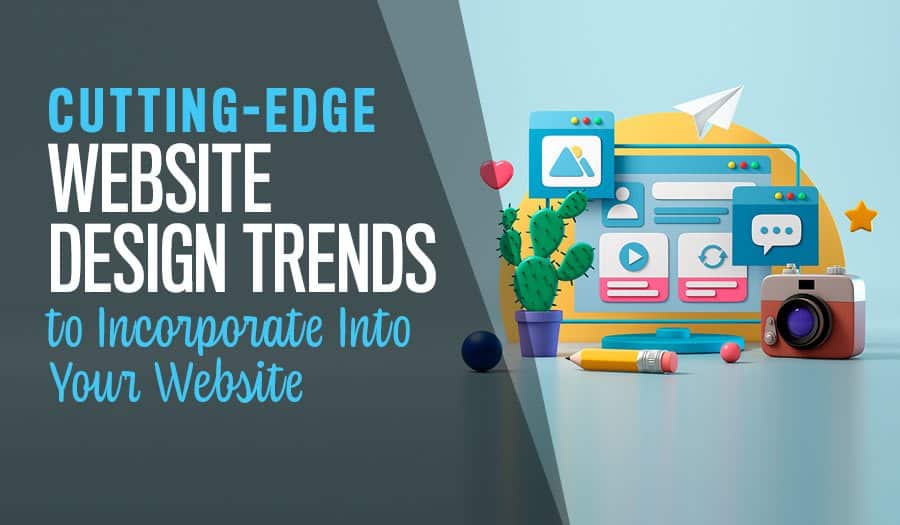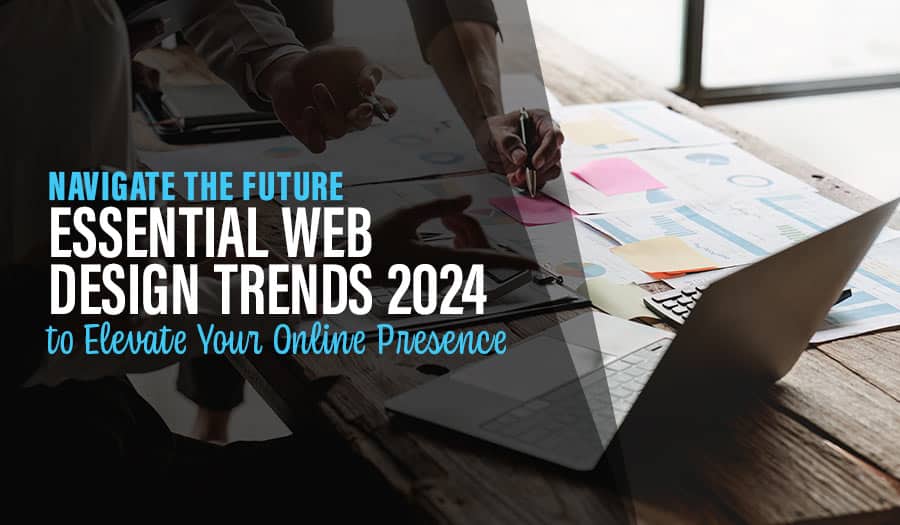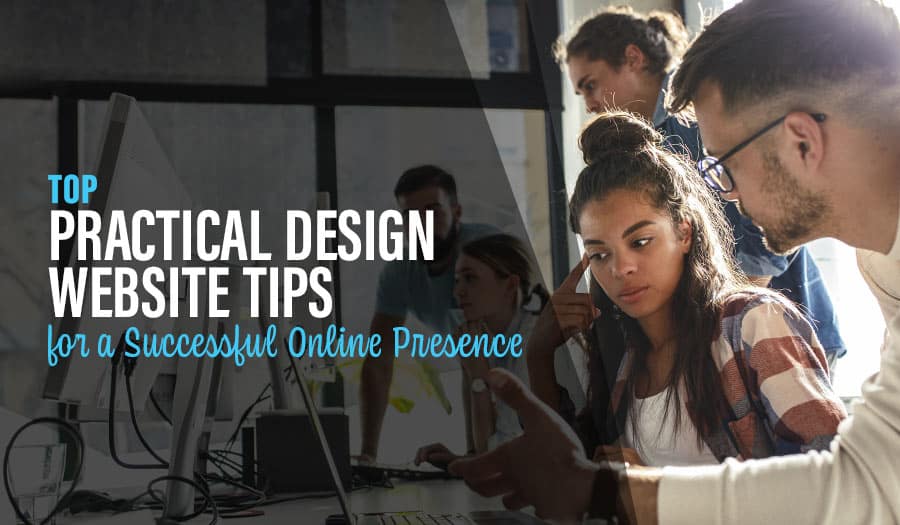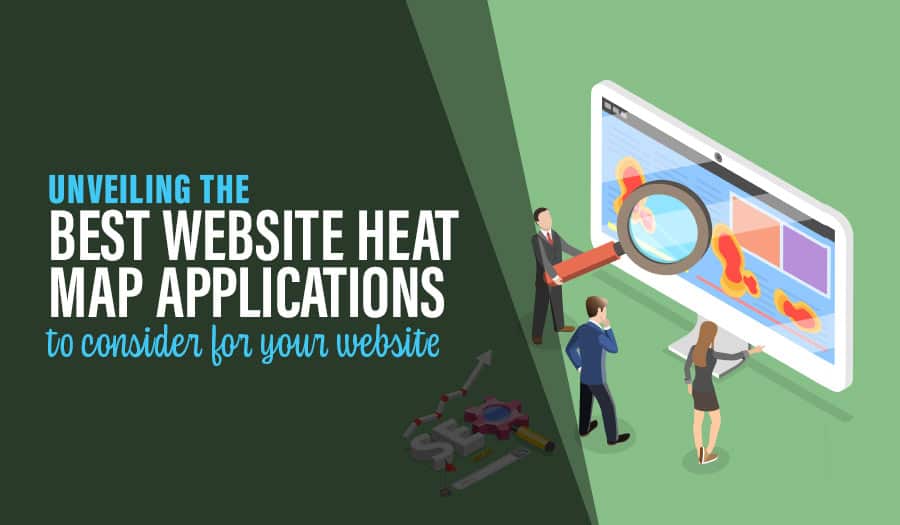The progression of web design has always rushed forward at a break-neck pace. In the last year, we’ve seen some incredible new web design trends appear and old favourite trends come back to light.
In fact, because current events have massively swelled the online audience and online operations, web design is developing even faster than usual. Many brands are building out thumbnail websites into full-service web portals. Others are making customer-facing websites for the first time.
From the newbies to the old pros, what’s been developing includes a wide variety of techniques. Some relate to simple use of space, some relate to evolving customer attitudes. All of these web design trends are the latest that the market has to offer.
8 Cutting-Edge Web Design Trends to Incorporate Into Your Website
- More Spacious Negative Space
- Triggered Animation Elements
- Dark Mode
- Monochromatic Colour Schemes
- Video Backgrounds
- 3D Graphics
- Inclusive Design
- Connecting to Humanity
1. More Spacious Negative Space
There’s no question that negative space is valuable in web design. The negative space provides visual and experiential cushions between the UI elements. Enough negative space makes it possible for your users to read the content without clutter, to make out your icons, and to mentally separate each element.
Negative space is also essential for mobile design. Space between elements is also space for people to be more precise with touch controls. Mobile touch controls will not work correctly if UI elements are too small or too close together. Fingers will flub and frustratingly select the wrong elements, which can even lead to account and financial problems through misuse of a mobile interface. This is why negative space properly used is so important in today’s web design.
The current trends in spacing focus on much wider spaces and more negative space between elements. When used to organise and visually differentiate content areas, users can perceive your page faster and with greater memory. There are two types of negative space in the trend, micro-spacing and macro-spacing. Macro spacing separates page areas while micro-spacing separates lesser spaces like the span between letters in a word.
2. Triggered Animation Elements
Smooth web design is in, often so subtle that the user doesn’t immediately realise. One of the leading trends is triggered animation. If you think back, you’ve surely seen this technique used both recently and well. Data that rolls and charts itself as you scroll up. Animations that trigger when you mouse-over a page element.
Sometimes, the triggered animations are entirely designed for entertainment while often animations are used to catch the eye and politely draw attention to the most important page elements.
Sometimes animation is used indiscriminately, like a page background. Sometimes it is front-and-centre. The goal is to make your audience feel involved and engaged with the content directly. Triggered animations not only provide moving focus, they are also customer-centric to the needs and feeling of your customers during negotiations.
3. Dark Mode
Dark mode is inclusive, easy, and incredibly cool. Dark mode is a trend that’s been in demand since the late 90s and only recently delivered to satisfaction. In short, dark mode is displaying your website or mobile app with a dark background and pale text instead of black on white. White pages and black text can become straining, especially for those who work at night and/or with a great deal of text.
Dark mode allows anyone who’d rather look at a dark screen to do so. They can switch between dark mode and light mode based on the amount of light in their physical workspace. Dark mode is often better for playing videos and displaying well-chosen images as well, because the media itself will stand out against the dark background.
Dark mode is not only essential, it’s also the answer to a decades-long debate about whether it’s better to have a white or dark background and black or pastel text. The answer is that you can enjoy both on the same operating system, so you might as well.
4. Monochromatic Colour Schemes
Want to know what’s up in the world of colour on the cutting edge? Cheerful accent walls and window dressings may be a great way to personalise, but lately, homeowners have to trend toward a monochrome palette.
Monochrome is when someone selects a single hue and translates that into a theme with different shades. Start with a company colour and/or logo design. Use the primary colour to derive lighter and darker shades of the same hue. Use the palette you have just created of light and dark colours to adorn the entire website, or pick a colour page-by-page.
Monochromatic design is considered relaxed and elegant for most users. It creates a pleasing palette and even gives you room to get detailed without overwhelming a user with intense colour choices.
5. Video Backgrounds
If there is one thing we can say about the latest web design, it’s animated or filmed video backgrounds. Especially on content pages, especially above the fold. Suddenly, everywhere you turn there are above-the-fold headers and page titles that feature moving pictures in the background. Sometimes the video background is charming and even inspiring. Sometimes it’s the same old-same with your local demographic.
We’ve seen video backgrounds used for personal pages through huge corporation web pages. Video backgrounds add a sense of immersion and feeling that text and photos can’t. Video backgrounds above-the-fold can quickly display exactly what your company has to offer. You can show off your process, products, and services in action. You can show off smiling faces or cool product uses.
A video background puts vivid moving pictures in front of the audience before the page even finishes loading. Just be sure that your video background blends well with the rest of the design and does not overpower the other above-the-fold content.
6. 3D Graphics
Another trend on the rise is the use of 3D design in your website graphics. This is occurring in two ways. In first, you can now easily use 3-D rendering and design software to create 3-D graphics. Your logo, your graphical page name, infographic elements, and the design of every page on your website could be enhanced with a touch of 3-D in the design.
You can also use 3-D graphics to immerse web users into the experience. Consider a widget that moves the light source around a graphical asset that also shifts shadows and colour accents, for example. There are many ways to implement 3-D both statically and interactively in web design. Current design trends are only scratching the surface, but with the creation technology available, it’s only a matter of time before someone invents the next cutting-edge 3-D design strategy.
7. Inclusive Design
There has also been a heightened focus on inclusive design. This might be the big trend for the next cycle. Inclusive design is web design focused on handicap accessibility, with a stylistic preference toward inclusivity instead of separate accommodations.
Consider the way that responsive design naturally includes every device size and resolution without requiring users to enter a menu and select their screen size. Inclusive design seeks to use the same principles to make websites and apps more universally accessible without having to cordon-off handicap features. The approach is to identify exclusions and eliminate them with creativity and innovative design instead of creating specific enablement tools.
Inclusive design not only makes websites and apps more approachable for a variety of handicapped users. It also makes the innovations introduced available to the entire user population. For example, audio learners who are not blind might benefit from a read-aloud feature that is not hidden inside enablement menus. And people with imprecise tapping may benefit from larger buttons and broader negative space without having a specific medical condition.
With the inclusive design, your entire audience benefits from exclusion-eliminating innovations.
8. Connecting to Humanity
Last but not least, web designs are focusing more on the human impact that businesses or clients can make. It has been long-since commented on that Millennials are more connected to charity and the importance of making a difference and Gen Z reflect these values as well. So it should come as no surprise that brands are leaning further toward talking about the human side of business.
What started as a trend toward testimonials has turned into greater responsibility awareness and a powerful desire for real human stories. Use your web design to show and share how your company has positively impacted lives. If you use sustainable business practices or partner with charities, talk about the impact that has or the impact your efforts prevent.
Build humanity into your website to reflect the attitudes of today’s audience of consumers and business professionals. Whether you are B2B or B2C, most customers will prefer a brand making a positive difference over one that seems to be pure commercial.
Right now is your brand’s opportunity to become one of the innovators. Don’t just ride the wave. Put in the effort to introduce new features and designs that create the leading-edge of current trends or introduce a new trend entirely. From the sudden shift into remote work to the current state of web design technology, now is the perfect time to innovate your brand’s website design and web services.
Contact us for more cutting edge web development insights or a personalised consultation of your online plans.
Take your business to the next level with a Pixel Fish Website.
Check out some of our latest Website Design projects.
Further Reading
10 Plugins that Showcase the Versatility of WordPress Website Design
10 Signs Your Outdated Website Should Be Upgraded to WordPress
9 Website Features Now Essential for Remote Users
Read More
5 Ways Your Website Can Add Value to Your Business
Understanding the Importance of Website Maintenance
How to Create a Great First Impression in Business
Harness The Power Of Listening To Your Customers
Why your business needs to embrace WordPress for Web Design
5 Reasons to Regularly Review Your Business Website
Top 8 Advanced WordPress Features and Plugins to Beat Your Competition
9 Business Web Design Package Features Your New Website Must Have
Understanding Inclusive Web Design & How to Include It in Your Website
Top 9 WordPress Website Design Trends
Why You Need To Consider Using Background Videos On Your Website
What is Website UX and how it effects your Business Web Design SEO
6 Essential Features of Successful E-Commerce Product Photos
How to Create a Landing Page for Your Small Business: A Comprehensive Guide



